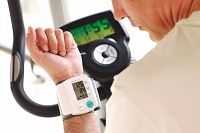Apr 14, 2021 03:46:25 PM
- Home
- Blog Details
Advancement in Medical Technology
Advancement in Medical Technology
Heart disease is a major health concern worldwide, affecting millions of people each year. The good news is that advancements in medical technology and research have led to new treatments that are helping to improve patient outcomes. In this blog, we'll explore the latest developments in the treatment of heart disease, including new medications, procedures, and devices.
Why is it Important
Heart disease is a leading cause of death and disability worldwide. It can lead to a range of health problems, including heart attacks, stroke, and heart failure. The latest developments in the treatment of heart disease are important because they offer new options for patients who may not have responded to traditional treatments. These new treatments can improve the quality of life for patients and even extend their lives.
Benefits of the latest developments in the treatment of heart disease
There are several benefits of the latest developments in the treatment of heart disease, including
- Improved outcomes : New treatments can help to reduce the risk of complications and improve overall health outcomes for patients.
- Fewer side effects : Many of the new treatments are less invasive than traditional treatments and have fewer side effects.
- Personalized treatment : With advancements in medical technology, doctors are now able to tailor treatment plans to each patient's specific needs.
- Increased life expectancy : New treatments are helping to extend the lives of patients with heart disease.
New Medications
One of the most exciting developments in the treatment of heart disease is the emergence of new medications. These medications work in a variety of ways, including reducing blood pressure, lowering cholesterol levels, and improving heart function. Some of the latest medications include:
- PCSK9 inhibitors : These medications lower cholesterol levels by blocking a protein called PCSK9, which is involved in the breakdown of LDL cholesterol.
- SGLT2 inhibitors : These medications are used to treat type 2 diabetes but have also been shown to reduce the risk of heart failure in patients with or without diabetes.
- Sacubitril/valsartan : This medication is used to treat heart failure and has been shown to reduce the risk of hospitalization and death.
New Procedures:
In addition to new medications, there are also new procedures that are helping to improve the treatment of heart disease. Some of the latest procedures include:
- Transcatheter aortic valve replacement (TAVR) : This minimally invasive procedure is used to replace a damaged heart valve. It involves inserting a new valve through a small incision in the groin or chest.
- Left atrial appendage closure (LAAC) : This procedure is used to reduce the risk of stroke in patients with atrial fibrillation. It involves closing off the left atrial appendage, which is where blood clots often form.
- Enhanced external counterpulsation (EECP) : This non-invasive procedure is used to treat angina by increasing blood flow to the heart. It involves wearing special cuffs on the legs that inflate and deflate to help improve blood flow.
New Devices
Finally, there are also new devices that are being developed to treat heart disease. These devices include:
- Cardiac resynchronization therapy (CRT) devices : These devices are used to treat heart failure by helping the heart beat in a more synchronized manner. They are implanted under the skin and connected to the heart with leads.
- Ventricular assist devices (VADs) : These devices are used to help pump blood from the heart to the rest of the body in patients with severe heart failure. They are implanted inside the body and can be used as a bridge to heart transplant or as a long-term treatment option.
- Implantable cardioverter defibrillators (ICDs) : These devices are used to treat abnormal heart rhythms by delivering an electric shock to the heart when needed.




